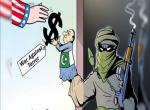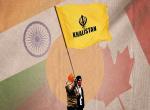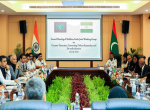The holy city of Amritsar was shaken by a grenade attack by two masked men who brandished pistols and forced their way into a weekly congregation of the Nirankari Sect and lobbed grenades into the prayer hall of the Nirankari Bhavan of Adliwal village of Amritsar on November 18, 2018 (India Today News 1980). In this attack, three people were killed and 21 people are injured (Rana 2018).
A three-member team of the National Investigation Agency (NIA) rushed to the spot and began preliminary investigations. Initial investigation of blast site confirmed that the grenade used in the attack was of HE-36 series which is part of the Pakistani army arsenal and is normally used by the Pakistan Army to create deadly explosion splinter casualties. The modus of operandi of the attack was akin to one commonly employed during the dark era of militancy in Punjab in the 1980s and 1990s and strongly suggested possible involvement of inimical forces from Pakistan. This was to an extent confirmed by the Chief Minister of Punjab at a press briefing on November 20, 2018, stating that it was an act of terror and prima facie appeared to be executed by separatist forces backed by the Pakistan’s Inter-Services Intelligence (ISI) supported Khalistani or Kashmiri terrorist groups.
The incidence came in the backdrop of several intelligence-based operations recently conducted by the Punjab Police across the State, busting some terror modules. This included arrests of Kashmiri students for the alleged link to the separatists’ movement and accused of carrying blasts at Maqsudan Police Station in Jalandhar on September 14, 2018 (Gopal 2018). Besides, NIA too has been investigating several cases relating to Khalistan terrorists trying to restart militancy in the State of Punjab. In such a background, some analysts and media reports recall the tragic incident of April 13, 1978 at Amritsar in which 13 Sikhs were killed and which marked the beginning of the dark phase of terror in the State. The grenade attack of November 18, 2018 could well be a part of the recent efforts by Pak ISI to revive the Khalistan disturbance.
The question naturally arises as to why was the Nirankari congregation targeted? The Nirankari Sect is often considered to be heretics by the mainstream Sikhs. Followers of the Sect have long been easy targets for the hardliners. Incidences of clashes between Nirankari and Khalsa Sect can be traced to the past when Sikh extremist leader Jarnail Singh Bhindranwale and his Damdami Taksal followers had murdered the then chief of Nirankari Sect Gurubachan Singh in New Delhi in April 24, 1980. Since then, Punjab was pushed into terrorism for nearly 15 years (Sahni 2018). Even the Akal Takht had issued a decree directing all its followers to cut off all relations with those Sikhs who were part of Nirankari organization (Nanjappa 2018).
CM Punjab Confirms Khalistani Involvement
In a major breakthrough, Chief Minister of Punjab, at a press (November 21, 2018), confirmed within 72 hours of the incidence that the Punjab Police had traced the grenade attack in Amritsar to ISI backed Khalistani elements based in Pakistan. Police arrested two operatives of Khalistan Liberation Force (KLF) who not only confessed their involvement in the attack but also that they had carried out the attack at the instance of Pakistan based KLF leadership. Punjab CM added that in the past also, Pak-based KLF had conspired and executed killings of RSS, Shiv Sena and DSS leaders and workers as well as a Christian pastor in Ludhiana and Jalandhar in the year 2016 and 2017 with logistics and other support provided by the Pakistani establishment and the ISI (Bajwa 2018).
Experts suggest that the rationale behind Pakistan’s strategy to revive Indian insurgencies and recruit Indians to fight their own State is a lesson Pakistan had learnt during 26/11 Mumbai terror attack, where Ajmal Kasab, a Pakistani national, was arrested who unveiled Pakistan’s sinister plot. Such blunders Pakistan would like to avoid in future as localization of terror modules and insurgencies would not only give Pakistan much needed plausible deniability but also limit internal backlashes within Pakistan (Sareen 2018). They also maintain that this is not the first instance in the recent times of ISI involvement or its footprints being traced to terrorist actions. Several intelligence-based operations leading to the arrest of a number of Babbar Khalsa and other Khalistani activists and seizures of weapons in Punjab in recent pasts highlighted the fact that active Khalistani elements have bases in Pakistan and are openly supported by Pakistan Army’s intelligence wing (Sahni 2018).
Some of the prominent organisations which are supported by ISI and are proscribed terror organisations in India are the Khalistan Zindabad Force, International Sikh Youth Federation, Dal Khalsa International, Khalistan Commando Force (Panjawar) and Khalistan Tiger Force (M. Government of India 2018). Apart from these, several cells or sub-cells affiliated to these organisations, along with over-ground Khalistani organisations across the world, receive support from the ISI and the Pakistani diplomatic missions. Presence of Pakistan origin Lord Nazir Ahmed as speaker at the recent rally on August 12, 2018 at the Trafalgar Square, London, called ‘Referendum 2020’ was also indicative of the establishment of the event and the agenda. Media reports suggest that the ‘Referendum 2020’ would be launched on June 6, 2020, to mark 36 years of Operation Blue Star in 1984 (Verma 2018). Similarly, the ‘Sikh for Justice Organization’, also an ISI backed NGO, organised a rally in New York and submitted a petition at the UN Headquarters, New York titled ‘Self Determination of Sikh People – an overview of International Law’ (APP 2018). This rally was orchestrated by the Gurpatwant Singh Pannun, a close associate of prominent Khalistani extremist of Khalistan Tiger Force Jagtar Singh Tara (Asian News International 2018). Media outreach and mobilization of resources for the publicity of this event suggested Pakistan’s direct involvement and support to the efforts to revive pro-Khalistan movement in Punjab.
Pakistan since long has been putting its resources under Kashmiri-Khalistani (K2) project and making efforts to penetrate into the Indian border states. Since March 2017, the Punjab Police has successfully prevented major terror acts in the state by busting 17 ISI backed terror modules. The Punjab Police have also arrested 81 militants and seized 77 weapons including automatic weapons, explosives and hand grenades from these terrorists. Besides, since March 2017, the Punjab Police have recovered three arms consignments pushed into Punjab by Pakistan’s ISI to arm Sikh militant outfits like International Sikh Youth Federation (ISYF), Khalistan Zindabad Force (KZF), and Khalistan Liberation Force (KLF) etc. These consignments consisted of five Ak-47 rifles, one MP-9 Assault rifle, 10 pistols and 11 hand grenades (Bajwa 2018).
Apart from facilitating logistic and training support to the terrorist groups, Pakistan Army is also investing its resources to unite Kashmiri and Khalistani groups and facilitating operational cooperation between Khalistani groups and ISI controlled terror groups like Jaish-e Mohammed (JeM) and Lashkar-e Taiba (LeT) (Sahni 2018). This fact was also acknowledged earlier by the US Department of State in its annual report of 1991 in which it clearly stated, “There were continuing credible reports throughout 1991 of official Pakistani support for Kashmiri militant groups engaged in terrorism in Indian-controlled Kashmir, as well as support to Sikh militant groups engaged in terrorism in Indian Punjab. This support allegedly includes the provision of weapons and training” (The US Department of State 1991).
In this backdrop, it is highly unlikely that Hizb-ul Mujahideen (HM), which has faced maximum damage in the ongoing operations by security forces in 2018 and is facing survival battle in the Kashmir Valley, to harbour ambitions of expanding its footprints beyond south Kashmir. Deadly suicide attacks and strong operational capabilities make JeM a preferred strategic asset for this purpose by the ISI. Most of the militant leadership of LeT and HM have been neutralized by the security forces in the Kashmir valley and their support structure is under intense pressure of investigation and law enforcing agencies at domestic, regional as well as global levels. JeM has thus become the obvious choice for its handlers (ISI) across the borders to continue terror activities in J&K Valley. In such circumstances, the terror attacks by JeM militants at Gurdaspur and Pathankot and the kind of arms and ammunition recovered from Punjab and from various intelligence-driven operations confirm the involvement of JeM in the continuing terror activities in the region.
Kartarpur Corridor – an Attempt to Promote Pro-Khalistani Sentiments?
Pilgrimage related visits between the two countries are covered under Pilgrimage Protocol of 1974. Since 1980s, it has been Pakistan’s strategy to open a number of Sikh Pilgrimage destinations inside Pakistan - like Gurudwara Shri Nankana Sahib, Rawalpindi, Gurudwara Shri Panja Sahib, Rawalpindi, Gurudwara Shri Dera Sahib in Lahore - along with other 12 pilgrimage cites for Indian pilgrims (M. Government of India 1974) (Express News Service 2018). During Zia-ul Haq’s rule, cautious attempts were made which were intensified after Operation Bluestar to provoke Sikh Pilgrims to demand a separate state. Since then, various attempts have been made by the ISI to bring together Sikhs from the US, Canada and Australia and provoke Indian Sikhs (Sirrs 2017). Along with this instigation through electronic media, flags and posters are often projected in these pilgrimage sites to provoke separatist sentiments.
The Kartarpur Pilgrimage site was never considered since independence and is being opened after 71 years. Although a welcome initiative, given the element of security concern, there is need for India to evolve clear modalities before institutionalizing the Kartarpur corridor1. Along with these modalities, India will have to assert its diplomatic outreach bilaterally as well as multilaterally to restrain Pakistani agencies, who are in total control of Sikh Pilgrimage sites in Pakistan, from utilizing it for promoting pro-Khalistani incitement of Indian Sikh Pilgrims during their visit.
Investigations into recent incidences of terror in Punjab underscores a clear agenda of the ISI to revive Khalistani terrorism in India. Even though such attempts are highly unlikely to succeed and emerge as a national threat, India needs to closely monitor the developments and put in place an effective monitoring and enforcement machinery to deal with any untoward developments.
Endnotes
- Kartarpur is not covered under the 1974 Protocol, but with both sides deciding to allow Indian Sikh pilgrims visit the site, the protocol may have to be amended to include it under a separate visa-free category. Or there might be a separate bilateral agreement laying down the rules, numbers, and days of access to the shrine.
References:
- APP. 2018. "Big Sikh rally in New York demands Khalistan." The Nation, October 1. Accessed November 22, 2018. https://nation.com.pk/01-Oct-2018/big-sikh-rally-in-new-york-demands-khalistan.
- Asian News International. 2018. "Pro-Khalistani rally of Referendum 2020 designed by Pakistan fails to draw anti-India support in London." First Post, August 13. Accessed November 21, 2018. https://www.firstpost.com/world/pro-khalistani-rally-of-referendum-2020-designed-by-pakistan-fails-to-draw-anti-india-support-in-london-4951291.html.
- Bajwa, Harpreet. 2018. "Amritsar grenade attack: One KLF operative arrested, Amarinder reiterates ISI's role." The New Indian Express, November 21. Accessed November 22, 2018. http://www.newindianexpress.com/nation/2018/nov/21/amritsar-grenade-attack-one-klf-operative-arrested-amarinder-reiterates-isis-role-1901328.html.
- —. 2018. "Amritsar grenade attack: One KLF operative arrested, Amarinder reiterates ISI's role." The New Indian Express, November 21. Accessed November 22, 2018. http://www.newindianexpress.com/nation/2018/nov/21/amritsar-grenade-attack-one-klf-operative-arrested-amarinder-reiterates-isis-role-1901328.html.
- Express News Service. 2018. "Express Fact Check | Visas for pilgrims: 15 shrines in Pak, 5 in India under protocol." The Indian Express, November 27. Accessed November 27, 2018. https://indianexpress.com/article/explained/explained-snippets-fact-check-ground-reality-15-shrines-in-pak-5-in-india-under-protocol-for-pilgrim-visas-5466033/.
- Gopal, Navjeevan. 2018. "Amritsar grenade attack: 40 years ago, clash between Nirankaris, Sikh radicals pushed Punjab into dark days of terror." The Indian Express, November 20. Accessed November 20, 2018. https://indianexpress.com/article/india/amritsar-grenade-attack-40-years-ago-clash-between-nirankaris-sikh-radicals-pushed-punjab-into-dark-days-of-terror-5452821/.
- Government of India, Ministry of External Affairs. 1974. "Protocol on visits to Religious Shrines between India and Pakistan." https://mea.gov.in. September 14. Accessed November 27, 2018. https://mea.gov.in/bilateral-documents.htm?dtl/6199/Protocol+on+visits+to+Religious+Shrines.
- Government of India, Ministry of Home Affairs. 2018. "TERRORIST ORGANISATIONS LISTED IN THE FIRST SCHEDULE OF THE UNLAWFUL ACTIVITIES (PREVENTION) ACT, 1967." https://mha.gov.in. November 3. Accessed November 21, 2018. https://mha.gov.in/related-links/banned-organizations.
- India Today News. 1980. "Nirankari head Baba Gurbachan Singh shot dead." India Today, May 15. Accessed November 1, 2018.
- Nanjappa, Vicky. 2018. "Why the attack on the Nirankari Mission in Amritsar appears to be an act of terror." One India, November 18. Accessed November 19, 2018. https://www.oneindia.com/india/why-the-attack-on-the-nirankari-mission-amritsar-appears-be-an-act-of-terror-2809601.html.
- Rana, Yudhvir. 2018. "3 killed in Amritsar grenade attack on Nirankari prayer gath .." The Times of India, November 19. Accessed November 19, 2019. https://timesofindia.indiatimes.com/india/3-killed-in-grenade-attack-on-nirankari-prayer-gathering/articleshow/66686085.cms.
- Sahni, Ajai. 2018. "Why Cry ‘Islamist Terrorism’ When Khalistanis May Be Behind Attack." The Quint, November 21. Accessed November 21, 2018. https://www.thequint.com/voices/opinion/amritsar-nirankari-bhawan-attack-khalistan-isi?fbclid=IwAR2yDJ3L8VUChhGDt7a6O0sDFcb9KLgj1fcSzP8WIGJMARvJh2BJ5lPHW5Q.
- Sareen, Sushant. 2018. "The past as prologue." https://www.orfonline.org. November 24. Accessed November 26, 2018. https://www.orfonline.org/expert-speak/the-past-as-prologue-45731/.
- Sirrs, Owen L. 2017. Pakistan's Inter-Services Intelligence Directorate: Covert Action and Internal Operations. First. New York: Routledge. Accessed November 21, 2018.
- The US Department of State. 1991. "Asia Overview - Patterns of Global Terrorism: 1991." https://fas.org. April. Accessed November 22, 2018. https://fas.org/irp/threat/terror_91/asia.html.
- Verma, Sanjeev. 2018. "Pak Lt Col brain behind pro-Khalistan initiative in Canada, .." Times of India, August 7. Accessed November 11, 2018. https://timesofindia.indiatimes.com/india/pak-lt-col-brain-behind-pro-khalistan-initiative-in-canada-europe-sleuths/articleshow/65299899.cms.
(The paper is the author’s individual scholastic articulation. The author certifies that the article/paper is original in content, unpublished and it has not been submitted for publication/web upload elsewhere, and that the facts and figures quoted are duly referenced, as needed, and are believed to be correct). (The paper does not necessarily represent the organisational stance... More >>
Image Source: https://encrypted-tbn0.gstatic.com/images?q=tbn:ANd9GcQGvzMWfHyANql-BEy5vbAAr1p-CIL4dtZycpJvI50xMGWFblYfPQ











Post new comment